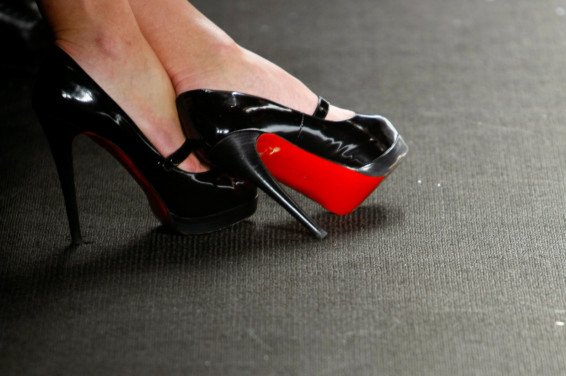
Can you trademark a colour?
French shoe designer Christian Louboutin — known for sky-high stiletto shoes with scarlet soles that can sell for upward of $1,000 (Dh3,672) — has been trying to do so for years. Louboutin first grabbed his assistant’s red nail polish and applied it to the outsoles of a shoe a quarter century ago. Since then, he has frequently declared the design element to be his recognisable signature, and argued it merits legal protection.
On Tuesday, the European Union’s highest court dealt a blow to that effort.
Louboutin had filed a lawsuit in 2012 against Van Haren, a Dutch company whose retail outlets were selling affordably priced high-heeled women’s shoes with red soles. Lawyers for Louboutin claimed that the shoes sold by Van Haren, part of its Fifth Avenue by Halle Berry line, infringed his brand’s trademark for footwear. That trademark, registered in Belgium, the Netherlands and Luxembourg, referred to “the colour red (Pantone 18 1663TP) applied to the sole of a shoe.”
Van Haren had to temporarily stop making and selling the line of shoes, but the company’s lawyers fought back and the case eventually made its way to the European Court of Justice.
They have now won something of a reprieve. Maciej Szpunar, an advocate general for the court, said on Tuesday that Louboutin’s red soles were not a separate entity from the shape of his high-heeled shoes, and shapes typically cannot be trademarked under EU law.
In effect, he argued in a legal opinion, Louboutin’s red soles could be refused trademark protection, sending the case back to Dutch courts to consider. Judges in national courts typically, though not always, follow advice from the European Court of Justice’s advocates general.
The case highlights one of the most difficult questions in fashion - in a world where designers often have distinct styles, and attract admirers based on those styles, what can, and cannot, be trademarked?
Major luxury conglomerates like LVMH Moet Hennessy Louis Vuitton and Kering have historically been the most litigious, often using the courts to battle the counterfeiting that has long been a headache in the fashion industry. More recently, however, smaller brands and designers have also started to pursue legal action, particularly against larger luxury or fast-fashion companies which they claim use their designs without acknowledgment or permission.
Recently, Indian designer Orijit Sen and his New Delhi-based studio and store People Tree accused Christian Dior of plagiarising a block print of a man doing yoga poses. Sen argued that he had formulated the design in 2000, and complained when it was used for a red dress worn by Bollywood actress Sonam Kapoor on the cover of Elle’s Indian edition last month. He posted his complaints on Facebook under the title “Unchristian Dior.”
And in 2016, fast-fashion chain Zara was accused by at least 20 independent artists of plagiarising designs, while one of the most powerful voices to emerge in the online fashion world in recent months is Diet Prada, an Instagram account dedicated to calling out copying in the industry.
Indeed, illustrating the complexity of the issue, Louboutin previously won a battle against rival luxury fashion house Yves Saint Laurent in a US federal appeals court, allowing him to protect his red soles as a source-identifying trademark.
But Szpunar’s opinion for the European Court of Justice “could mean that Louboutin would not be able to stop its competitors, including haute couture fashion houses, from offering shoes with red soles,” said Sanjay Kapur, a partner at British law firm Potter Clarkson and a specialist in trademark law.
Trying to persuade courts to grant such protection to designs like Louboutin’s “may well be an insurmountable hurdle,” Kapur said. “The red sole could therefore become ubiquitous, which would seriously reduce the cachet associated with the Louboutin brand.”













